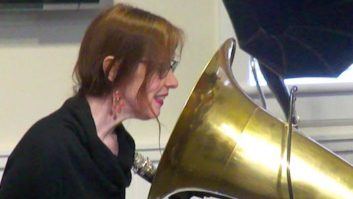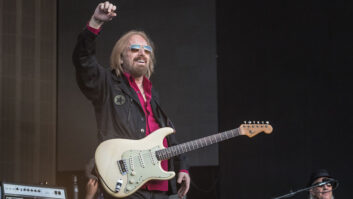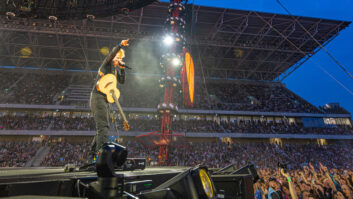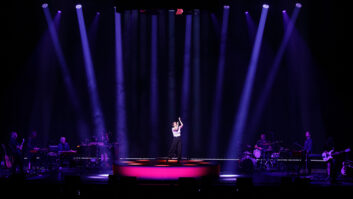It was a case of “Tom’s Diner Meets Tom Edison” recently, when singer/ songwriter Suzanne Vega cut some wax—as in wax cylinders—at Thomas Edison National Historical Park, as part of an AES event.
Thomas Edison National Historical Park in West Orange, NJ isn’t a park in the traditional sense of the word, as it’s comprised of buildings that housed the famed inventor’s lab and factory. Fittingly, the park hosted the AES Student Section of Boston’s Bay State College in February for a tour that likewise wasn’t traditional, as it culminated in watching Vega track on to one of the earliest recording mediums.
Arranged by AES Education Chair John Krivit, the event included a halfhour discussion of Edison’s development of early wax-cylinder recorders, prototypical jukeboxes and transcription machines by Edison Museum curator Gerald Fabris; a fascinating discussion by author Greg Milner (Perfecting Sound Forever) that placed Edison’s contributions in a larger context; and multiple takes by Vega as she performed both her trademark a cappella song, “Tom’s Diner,” and her 1987 hit, “Luka,” accompanying herself on guitar.
Recording in front of a crowd is never easy, but Vega—known for her soft, subtle voice—faced the additional challenge of having to belt into a horn in order to push the cutting stylus diaphragm at the other end hard enough to engrave the wax. Despite the challenge, Vega was excited and game for the experiment.
As might be expected with such old technology, there were some technical issues at first. The cutting stylus makes a small amount of noise as it etches wax, and that amplifies back at the performer through the horn during recording. However, during the first attempt to record “Tom’s Diner,” the noise level was unusually loud, and playback found the scratching had itself been recorded, making Vega’s voice virtually inaudible.
A second attempt was made with a brand-new, fresh cylinder, and suddenly the noise level was far lower; it turns out that wax cylinders can be reused by shaving them down, and the initial attempt had used one that had been whittled a bit too far. The second run-through of “Tom’s Diner” turned out far more audible, and, in fact, was a perfect fit for the cylinder, which held just over two minutes of audio. Hearing the faltering, shaky cylinder played back moments later brought a smile to everyone in the room.
The event was spearheaded by Krivit, an adjunct faculty member at Bay State College, who had arranged a similar event in Boston five years ago, having a local band known for playing at Red Sox games record “Take Me Out to the Ball Game” to wax on the song’s 100th anniversary at the Boston Public Library. Following that success, he envisioned a similar, yet even more comprehensive event.
“Bay State College has a small audio program of motivated students who created an AES Student Section that was most recently granted approval by the Board of Governors,” he explained. “A trip to West Orange looked like a great idea for a kickoff event.” David Bialik, Chairman of Broadcast Sessions for AES conventions since 1989, proffered the idea of asking Suzanne Vega to participate. “This seemed like a good idea to me,” said Krivit. “‘Tom’s Diner,’ a song still relevant to my students, was among the music that Karl Heinz Brandenburg used when developing the MP3. Now the audio world comes full circle!”
AES Bay State College Student Section
aes.org/sections/view.cfm?section=303
Thomas Edison National Historical Park
nps.gov/edis/index.htm
AES
aes.org







